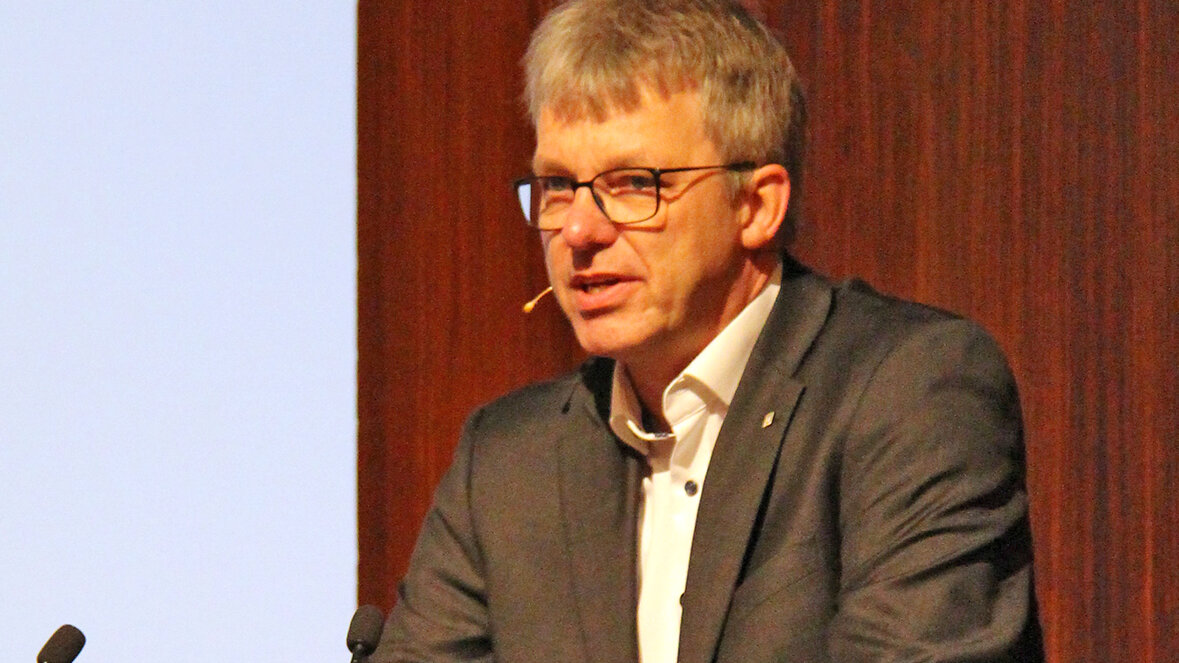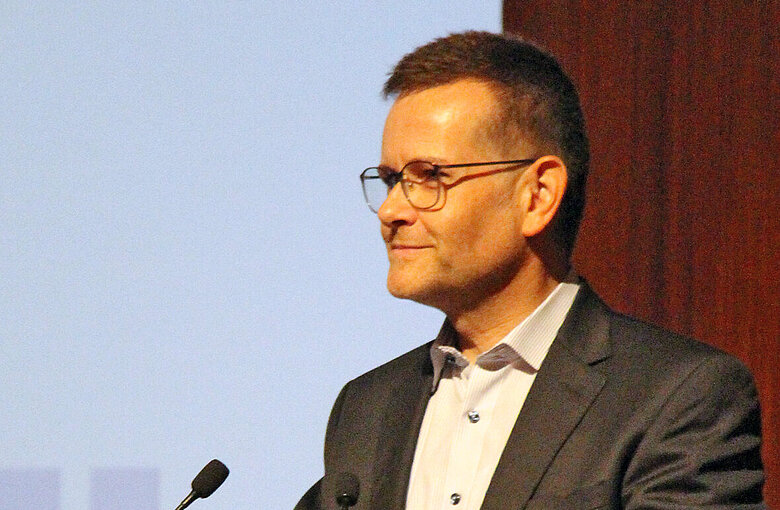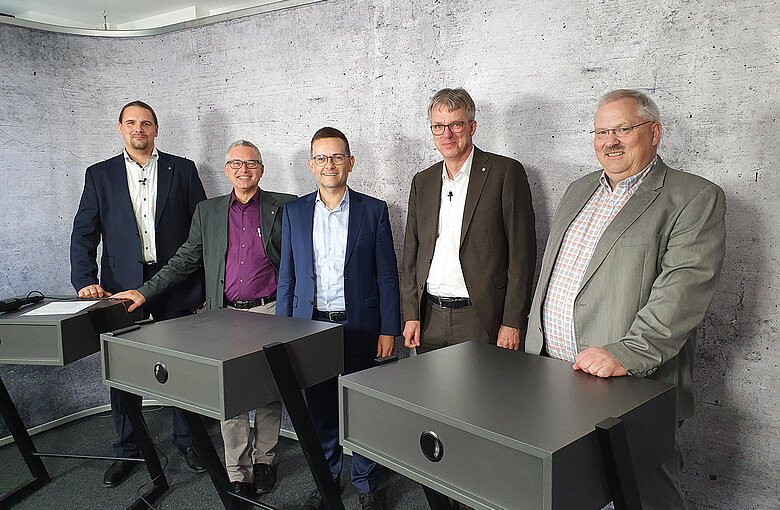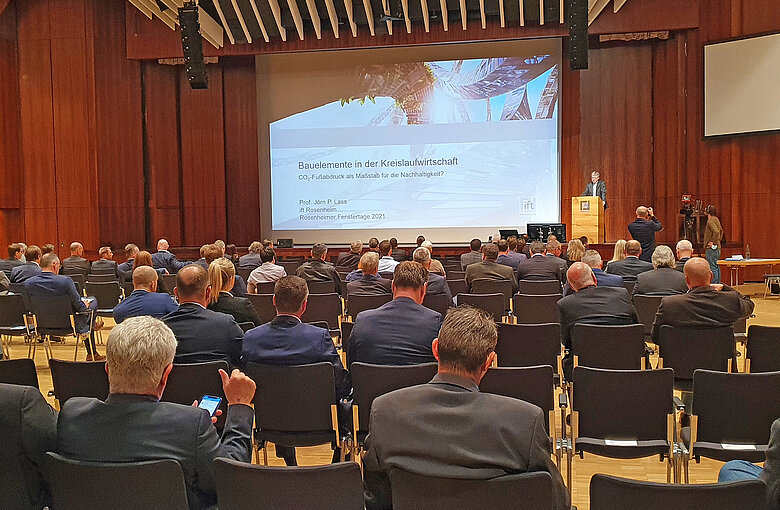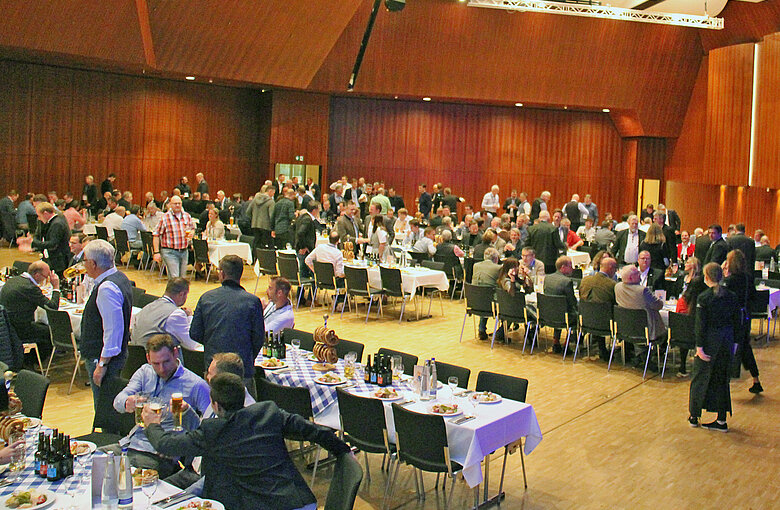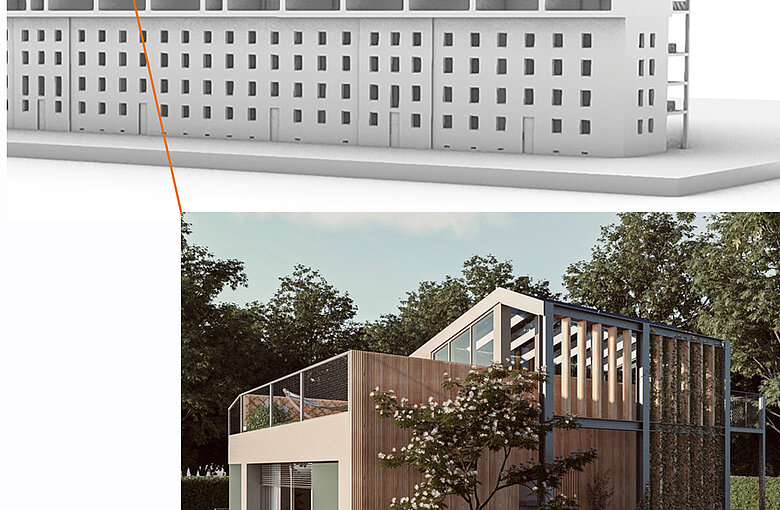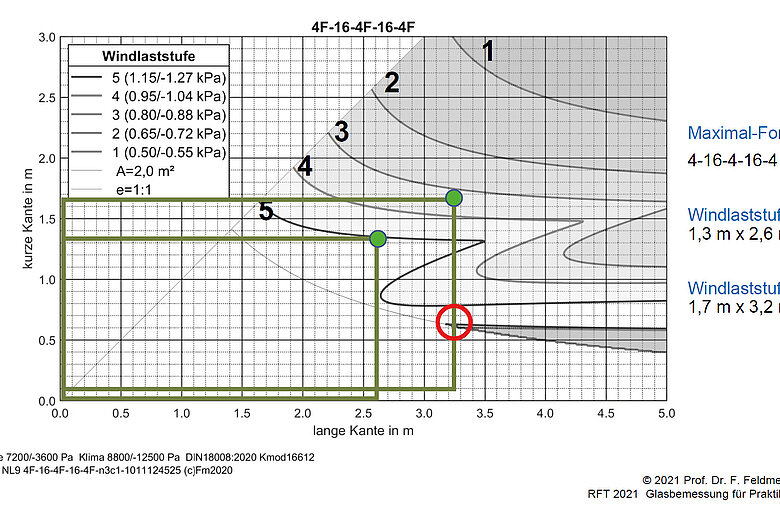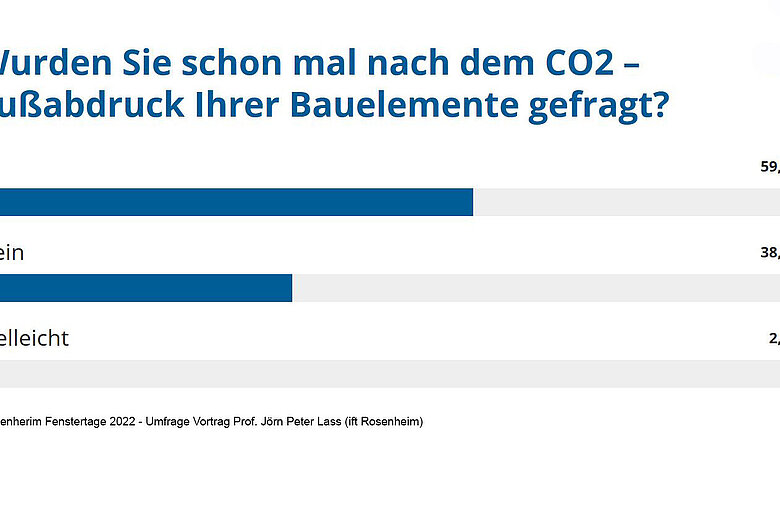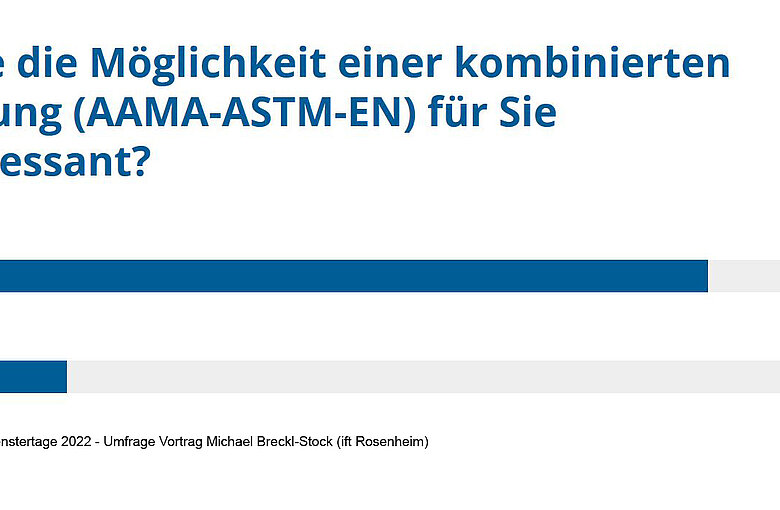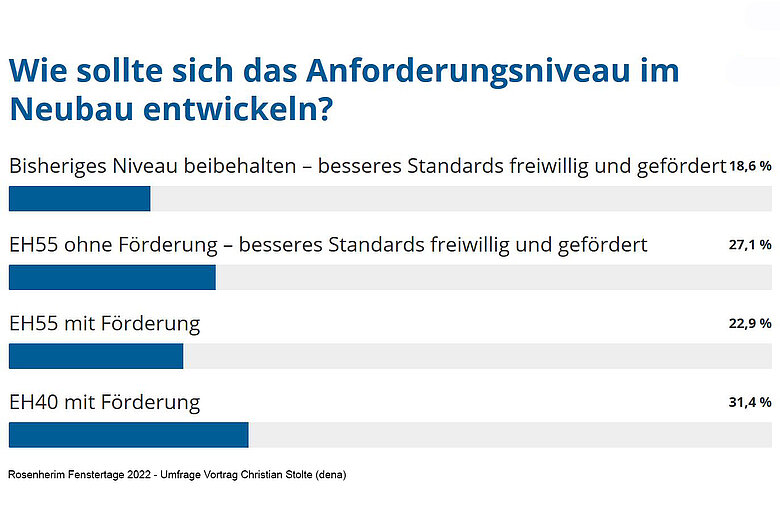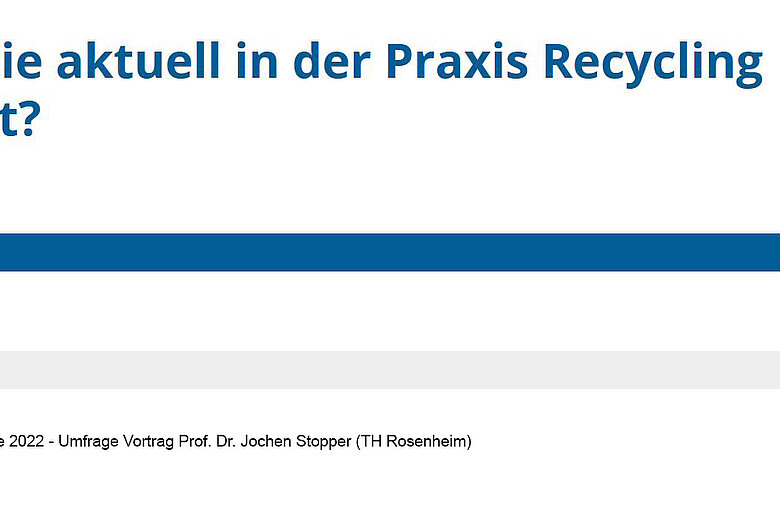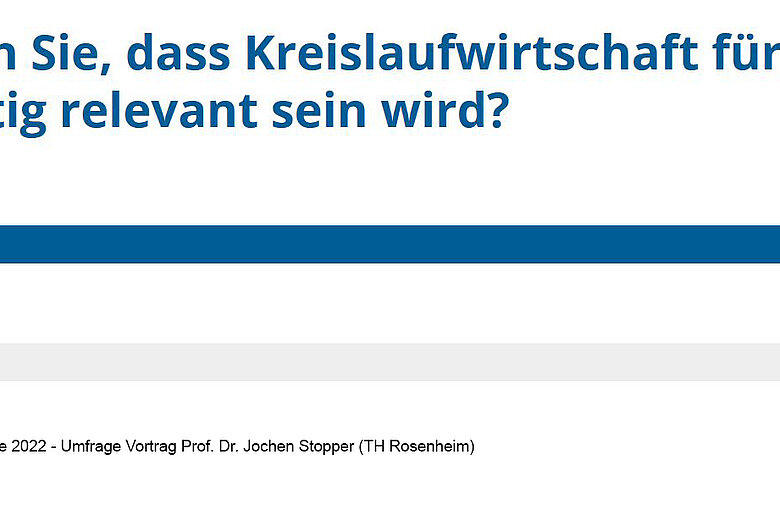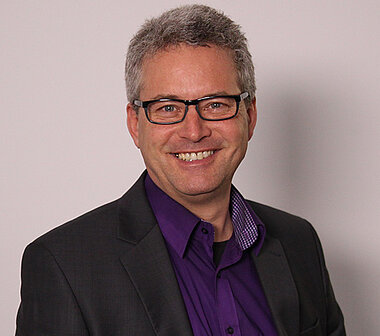Reading time: 25 minutes
480 participants at Rosenheim Window and Façade Conference are interesting getting the trends for 2022
Corona also "imposed" its rules on the Rosenheim Window and Façade Conference 2021, as the number of present participants was limited to 250 people. In addition, there were 230 online participants who were able to follow the presentations on screen. The motto "Turbulent Times" was very current, as the compass of the new traffic light government points to change with significantly increased measures against climate change. The window and facade industry must also play an important role here, so that the urgently needed energy refurbishment of the existing buildings, and thus also of 235 million old windows, gets underway. Speakers such as Prof. Lucio Blandini (ILEK), Prof. Jörn P. Lass (ift), Prof. Dr. Jochen Stopper (TH Rosenheim), Christian Stolte (dena) or Frank Lange (VFF) showed in detail what needs to be done to achieve the climate targets. "We must be prepared for the carbon footprint of construction products to replace the U-value as a characteristic value," says Prof. Jörn Peter Lass, Director of Institute.
With 250 participants, the Rosenheim Congress Center was fully booked in line with Corona's requirements, and an additional 230 participants followed the presentations online and took part in the live voting to get the relevant trends for 2022. The industry dinner was jointly organized by ift Rosenheim, VFF, BF and Netzwerk Frey at the Rosenheim Congress Center. Despite a good conversational atmosphere, this was of course no substitute for the well-known Bavarian festive evening with cult status in the Inntalhalle.
That is why Dr. Jochen Peichl (CEO of ift Rosenheim) promised that “… in 2022, there will be the original Rosenheim Window and Façade Conference again - with everything that goes with it". In contrast to the limitations at the industry dinner, the speakers' presentations were at their usual high level of information and provided the industry's decision-makers with the important technical input and details for planning and strategies for 2022 and the following years.
Prof. Jörn P. Lass (Director of Institute ift Rosenheim) kicked off with his presentation "Building elements in the recycling economy - Carbon footprint as a benchmark for sustainability?" He clearly showed that modern windows and glazing contribute a great deal to climate protection when the entire life cycle is considered. This is because considerable energy gains are possible on the west, east and south sides during the period of use with transparent building components. However, the glass surfaces must be matched to the building, and good variable shading device is an absolute must. Lass expects that in the near future, only CO2-neutral construction elements will receive maximum subsidies and that proof of a holistic assessment of CO2 emissions will therefore be necessary. Life cycle assessments and Environmental Product Declarations according to EN 15804 are available as "instruments" and are used by ift Rosenheim. However, Lass believes that the industry still has a lot of homework to do when it comes to introducing a genuine recycling economy, in which single sort recycling is planned right from the design and production stages. Composite materials will have a harder time. Manufacturers also still face design challenges in protecting against climate extremes such as floods, tornadoes and hailstorms. Lass expects considerable momentum here, because property insurers will only insure many buildings if windows and doors in particular offer tested protection.
Roland Fischer (ift Rosenheim) provided information on Brexit and how manufacturers can obtain the UKCA (British CE mark). Even though Great Britain has extended the transition periods for the continued use of the previously applicable European regulations (testing and product standards, CE mark, etc.), the new British regulations will apply from 01.01.2023. At the latest then, a manufacturer of building materials and building elements needs the necessary test evidences and documents for the UKCA mark. In principle, these test evidences must be provided or recognized by a British notified body (approved body). Fischer then showed how ift Rosenheim's cooperation with UL as well as the well-known British Standard Institute (BSI) means that ift test evidences can be used as the basis for the UKCA mark. This is currently only legally possible for products in AVCP System 1. For products in AVCP System 3, this is currently only possible for new tests. The possible use of existing test evidences from EU notified test laboratories ("historical data") is still being clarified. "I am very pleased that ift Rosenheim can simplify exports or imports with the UK for manufacturers of building materials and building elements through bilateral agreements," said Roland Fischer.
Peter Schober (Holzforschung Austria (Austrian Forest Products Research Society)), Karin Lieb (ift Rosenheim) and Michael Elstner (AGC Interpane) provided information on what to consider when using vacuum insulated glass (VIG). The survey right at the beginning showed that about 70% of the participants were interested in using VIG, not least because of the possible low U-value of 0.4 W/(m²K). After the proof of durability is possible on basis of ISO 19916-1 and the ift test program, and there are productions in Europe with reliable delivery times, nothing stands in the way of their use. However, some design features must be taken into account in the development of innovative windows, in particular a higher edge recess of approx. 25 mm to compensate for the thermal weak point of the edge seal and thus prevent condensation.
Mark Swanborough (UL) and Michael Breckl-Stock (ift Rosenheim) reported on how façade constructors can easily obtain the necessary tests and verifications to successfully and safely complete international façade projects. Facade engineering is an international business where very often existing facade systems have to be modified or new designs have to be developed. In both cases, additional tests are then usually necessary, based on European, American, British or other national standards. Breckl-Stock and Swanborough therefore presented the most important tests according to American and British standards and which special features should already be taken into account during design. It is also helpful to have a testing body that can test according to different international standards and prepare the necessary verifications in cooperation with national bodies. "I am very happy that with our new façade center we can do the required tests in an air-conditioned hall and can now also use an airboat engine for the AAMA and ASTM tests," says Michael Breckl-Stock (CTO ift Rosenheim).
Frank Lange (German association for façade and window manufacturer VFF) tuned the participants in to the major challenges posed by the need to increase building refurbishment to achieve Germany's climate protection targets 2030. He showed the different facts in favor of increasing the refurbishment rate to achieve the targeted 45% reduction in CO2 emissions by 2030. Even if a holistic refurbishment of the entire building including heating technology is desired, it will not be possible without prioritizing particularly suitable measures - in line with the motto "worst first". In this sense, the associations of the building envelope will massively lobby for measures to ensure that the approximately 235 million old windows (pre-1995) without insulating glass are quickly replaced. The technology for this is available; the task now is to build up the necessary capacities and eliminate the existing bottlenecks in the assembly area. Serial refurbishment, where complete facades including windows are simply mounted in front of an old building wall, is another option. This offers great opportunities for manufacturers with growth ambitions, as attractive funding pools are available that also apply to business investments. Furthermore, the association will advocate for a better and more transparent accounting of the solar gains of windows, as these are a decisive factor for modern efficiency houses.
Andreas Kreutzer (Branchenradar.com Marktanalyse GmbH) explained which factors are driving the window market in Germany, Austria and Switzerland. He also predicted steady growth in demand for the industry over the next 10 years (around 0.9% in Germany, 0.5% in Austria and 0.1% in Switzerland). Drivers are the housing shortage and the increase in energy refurbishment. German window manufacturers were amazed at the 25% higher window prices in Austria. Kreutzer cited as a reason that companies are better able to sell windows with added value, i.e. functional windows with solar shading, security, material, ventilation, electronics or triple glazing. In Austria, there are also larger manufacturers with a higher profile and market power that are better able to push through higher prices. For Germany, he put the potential additional sales from functional windows at 1.7 billion euros per year. In this sense, it is possible to learn from each other.
Christian Stolte (dena) explained not only the specifics of the current Building Energy Act (GEG), but also what changes can be expected from the new government. Stolte elaborated on Frank Lange's statements and vividly explained the important European and German rules and funding guidelines. In particular, the EU's Green Deal and its implementation in the German Climate Act will take full effect as early as 2022. The GEG requires in §10 that new buildings are to be constructed as lowest energy buildings, i.e. buildings with very low energy demand, which is substantially covered by renewable energies (Article 2 - EPBD). Stolte firmly expects an amendment to the GEG in 2022, in which the energy requirements for new buildings and the renovation of old buildings will then be tightened. The carbon footprint will gain in importance as a parameter - also because CO2 emissions must be listed in the building energy certificate. From 2023, only DIN V 18599 is to be permissible as a method of evaluation for residential and non-residential buildings. A fundamental change also arises if climate impact costs have to be taken into account in the economic efficiency requirement. The hall question clearly showed that the industry is also expecting a tightening of the energy requirements and sees the building standard Efficiency House 55 (EH55) as the basis and only better standards (EH40) will be promoted. So far, political measures have been limited to increasing subsidies for energy-efficient buildings by 5.7 billion, but Stolte estimates that other regulatory measures will be added in 2022, such as a requirement for PV modules in new buildings and major roof renovations, or replacement obligations for old windows without thermal glazing.
Prof. Dr. Jochen Stopper (TH Rosenheim) presented innovative ideas from the student competition Solar Decathlon Europe. Solar Decathlon EU is an international student competition to design, construct and operate a building for future living, whose energy needs must be met exclusively by self-produced solar power. The 10 evaluation criteria include aspects such as architecture, energy performance, feasibility & cost, functionality, sustainability or comfort. In 2022, the model buildings focus on housing expansion, climate neutrality and the recycling economy and will be presented in Wuppertal in June 2022. In addition to the reduction of CO2 emissions through modern buildings, Stopper focused above all on the more economical use of resources. This is because the building sector is responsible for about 40% of resource consumption and about 40% of waste worldwide. This was also the view of the majority of participants - over 80% confirming the great relevance of recycling and recycling economy in the hall question. However, foundation soil is also a scarce and expensive commodity, which is why Stopper predicts a high demand for roof extensions, storey extensions and redensifications, which can be achieved particularly well with wooden buildings. The Rosenheim team "levelup" is therefore entering the race with an add-on system in lightweight wood construction with a high degree of prefabrication. The modular design principle allows easy adaptation to different on-site installations and the high degree of prefabrication allows a fast construction time with little disruption to the existing structure. All materials are recyclable and the construction must be easily deconstructable. Facade greening is intended to improve the microclimate and biodiversity in urban areas, and e-mobility is part of building-integrated power generation. The innovative approaches of the student team are thus an ideal source of ideas and inspiration on the part of the manufacturers.
Prof. Dr.-Ing. M. Arch. Lucio Blandini (ILEK) presented highlights from practice and research and how these will shape sustainable, digital and adaptive facades in the future. Using the example of current projects such as the Airport Kuwait, the Kö-Bogen 2 in Düsseldorf or the Calwer Passage in Stuttgart, Blandini demonstrated the wide range and technical possibilities of current facade technology. This is increasingly influenced by the use of adaptive solar shading elements, facade greening and other approaches to improve the life cycle assessment. The two projects in Germany in particular are characterized by intensive facade greening to improve living comfort and the urban microclimate. Due to the variety of materials and digital planning or simulations (CAD, BIM, digital twin), optimal solutions can be found for a wide range of construction tasks. Today, however, it should no longer be thought of in static terms, but must allow easy adaptation to changing requirements. The planning follows the principles of resource efficiency, maximum mass savings and a life cycle analysis including planned deconstruction.
Christian Anders (Chairman Technical Committee VFF) and Rolf Schnitzler (ift Rosenheim) took us from the big wide world of façades back to the detailed challanges of constructive implementation and presented the relevant changes of the new guideline for installation for curtain walls, which covers three essential areas. First of all, an update of all normative changes, further documents, technical innovations and editorial adjustments was necessary. Secondly, the deepening and expansion of content, for example, sealing of construction, fastening, corrosion protection, exterior wall claddings or sound insulation, including calculation examples. The third area includes the inclusion of other construction variants such as add-on constructions, glass roof constructions and light roofs. The updated guideline for installation is thus once again an indispensable basis for the planning and execution of curtain walls for the next few years and will be completed by 2021.
Prof. Dr. Franz Feldmeier (TH Rosenheim) presented a tabulation method that practitioners can use to perform glass dimensioning according to DIN 18008-2. On basis of a general design approval and a type statics, the static proof for glazing can thus be provided. The background is that after the introduction of the new DIN 18008-2:2020-05, the popular general evidence facilitation is no longer applicable and a differentiated and complicated verification is now required, which is difficult to perform without computer support. In practice, however, there are many situations in which a mathematical verification is too costly, for example, when preparing quotations. Feldmeier therefore presented the use of simple application diagrams for common pane configurations, which was initiated by the associations BF, BIV, TSD and VFF as well as ift Rosenheim. The general design approval enables the application of current technical rules and the type statics based on them. The application diagrams offer considerable advantages, for example, the verification for pane sizes up to 3 m x 5 m or the simple design for 5 wind load levels (also in the area of the building corner) for buildings up to a height of 18 m. Thus, the application diagrams are a useful and fast alternative to calculating the glass thickness by software. The application diagrams are expected to be available in March 2022 after review and approval by DIBt.
